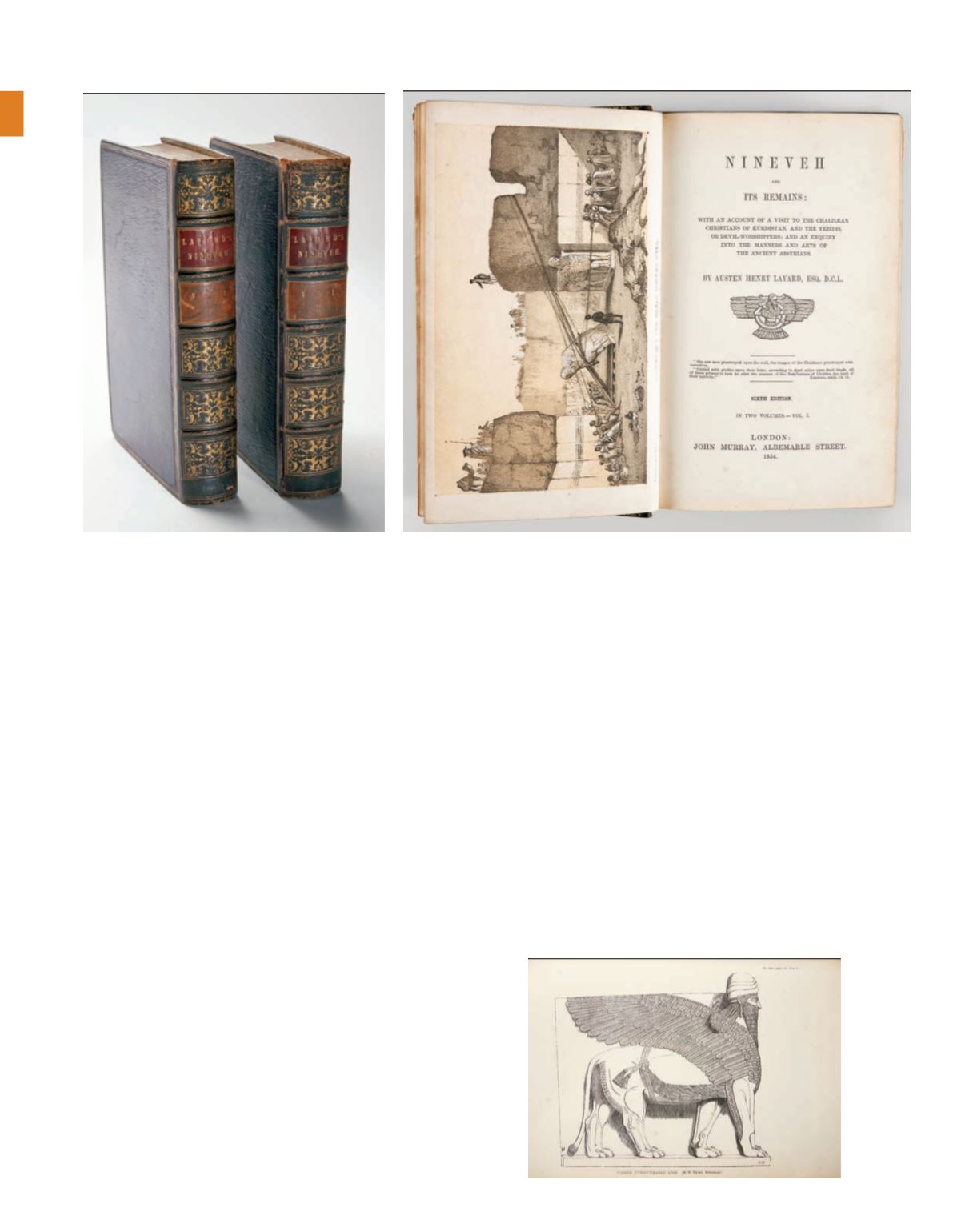
310
cabral moncada leilões 186 | 14 de Março de 2017
779
austen HenrY laYarD
1817-1894
n
ineVeH anD its remains
,
LAYARD, Austen Henry.- Nineveh and its remains: with an
account of a visit to the Chaldæan Christians of Kurdistan,
and the Yezidis, or devil-worshippers; and an enquiry into
the manners and arts of the ancient Assyrians.- Sixth
edition.- London: John Murray, 1854.- 2 vols.: il.; 22 cm.- E.
Layard (1817-1894), viajante, arqueólogo, historiador
e político inglês, nasceu em Paris e ficou célebre por ter
descoberto as ruínas da cidade histórica de Nínive,
da antiga Assíria (hoje Iraque) nas margens do Tigre. A
colação de cada um dos volumes é a seguinte: I - XXX, [2],
399 p.: il., 14 estampas, 1 mapa desdobr.; II - XII, 495 p.:
il., 12 estampas. No primeiro volume, a planta desdobrável
de Nimroud com manchas e uma secção destacada,
sem falta de suporte. Encadernações da época, inteiras
de marroquim calandrado, com as lombadas levemente
cansadas, apresentando, ambos os volumes, etiquetas
de pele nas contra-capas, com a seguinte dedicatória
gravada a ouro: This volume is respectfully presented
to the Revd. Owen Owen, Curate of Colne [Lancashire,
Inglaterra], as a testimonial of respect and esteem,
by the adult class. Colne, April, 1959.
Corte das folhas dourado.
€ 100 - 150
n
ineVeH anD its remains
,
English archaeologist, historian and politician,
was born in Paris and became famous for having
discovered the ruins of the historic city of Nineveh
on ancient Assyria (now Iraq) on the banks of the
Tigris. The organisation of each of the volumes
is as follows: I-XXX, [2], 399 p.: il., 14 engravings,
1 bochure map; II-XII, 495 p.: il., 12 engravings.
In the first volume, the Nimroud folding plant with
smudges and a highlighted section without lack
of support. An entire calendered Morocco bindings
of the time with slightly fatigued spines, showing both
volumes skin tags on the back covers with the following
gold engraved inscription: This volume is respectfully
presentend to the Revd. Owen Owen, Curate of Colne
[Lancashire, Inglaterra], as a testimonial of respect
and esteem, by the adult class. Colne, April, 1959.
Gold leaves cutting.


